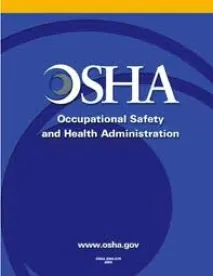The federal Occupational Safety and Health Administration (OSHA) has stepped up its enforcement of safety and health regulations in retail stores. Retailers need to be alert to health and safety issues at their stores and warehouses, both to ensure their workplaces are safe and to be ready for possible OSHA inspections and investigations.
Stores can be full of potential hazards, despite a reputation as relatively safe work environments. To OSHA, those recently delivered boxes of inventory stacked in an aisle or back room could block exits, walkways, or fire extinguishers. Unsecured boxes on shelves could slide or collapse. In warehouses, OSHA may be concerned about forklift safety, air quality, hot temperatures, lighting, lifting injuries, and hazards from conveyors.
Recent OSHA activity against national clothing and discount stores underscores that stores with multiple locations, such as national or regional chains, are especially appealing targets and vulnerable to serious OSHA attention and enforcement. Since OSHA considers all of a company’s locations to be one employer, OSHA will combine citations from multiple violations to find more costly “repeat” and even “willful” violations. Hundreds of thousands of dollars in proposed penalties, harmful media exposure, and increased civil litigation risks can result.
How can a retailer reduce these risks?
First, ensure that the company has appropriate policies, programs, and training to eliminate workplace hazards and to comply with federal and state safety regulations. These efforts will deliver direct benefits, of course, by improving safety. But they also can reduce employee complaints and accidents, which are the most common reasons for OSHA to decide to inspect a store.
Second, empower employees to raise safety concerns, even anonymously. Investigate each complaint right away, and address any problems discovered. All along, be sure to document investigations in writing for the record. Most important, do not take any steps against the complaining employee that could suggest retaliation against the worker for submitting the complaint. Employees also can suggest ways to make the workplace safer and healthier.
Third, create an OSHA-response team and decide how it should respond in the event OSHA shows up at a store or warehouse. Create a policy and train employees so they know what to do. For example, someone on the team verifies the credentials of anyone claiming to be a federal or state inspector. Be clear about when and how a store will consent to an inspection of non-public areas.
Handling an inspection effectively often turns on appointing the right person to accompany the compliance officer at all times. That individual becomes the company’s eyes, ears, and front line of defense. Train her to represent the company to the best advantage as the inspector looks for violations.
Keep the inspection focused from the start. Company policy should anticipate asking an inspector to wait in a designated location for an authorized escort. It also should emphasize the importance of holding an “opening conference,” when a company representative can ask the OSHA inspector to lay out the exact purpose and scope of the visit.
OSHA compliance officers often ask to review records. Company policy and training should prepare the team to ask for document requests in writing (though OSHA should be allowed to review immediately any records required by law to be maintained, such as injury and illness logs).
Before OSHA visits your establishment, equip the team to fully participate in the inspection. The team member designated to accompany the OSHA compliance officer should have the same tools as OSHA so she can photograph, measure, or record everything the government does.
The inspection is the store’s chance to learn as much as possible about OSHA’s purpose and concerns. The lead person should listen a lot and say a little. Where appropriate, discuss with the inspector conditions he or she considers possible hazards or violations. These discussions can be continued at the “closing conference” at the conclusion of the inspection.
Beyond OSHA inspections, the team should be prepared to handle safety complaints, injury and accident investigations, and employee interviews, among other issues. Work with the safety and health department and outside counsel to develop a thorough policy and train key personnel. Be ready when OSHA walks in.





 />i
/>i

